PORTNEUF RIVER, Pocatello, Idaho |
||
 |
||
Portneuf River upstream of the concrete channel. |
||
————————————————————————————————— This essay was originally posted to National Geographic's Water Currents blog on July 17, 2016. ————————————————————————————————— Special thanks to Hannah Sanger, Science and Environment Division Manager, City of Pocatello, and Mark Stone, Civil Engineering, University of New Mexico. —————————————————————————————————
I flood. That is what I -- and all my cousins -- do from time to time. It is part of our rhythm. In their hubris, humans build cities and towns right on our banks, then get upset with us when our waters rise and destroy some of their property. They try to control us by building dams and straightening our courses so that we no longer flow naturally, aiding the hydrologic cycle, creating meanders, spreading silt, and sustaining entire ecosystems of aquatic life, plants, and animals. |
||
 |
 |
|||
Concrete channelized Portneuf River as it flows through Pocatello, Idaho. |
End of 1.6-mile concrete channel. |
|||
I am the 124-mile long (200 km) Portneuf River, a tributary of the Snake River, in southeastern Idaho, United States. I begin and end on the ancestral lands of the Shoshone/Bannock Tribe, and I will tell you a story of just one reach of my body as it flows through Pocatello, Idaho, a town founded in 1889, and named for a Shoshone Chief. It is a sad tale of how people cannot think of me as a living being, but rather as a nuisance. Here is how they have mistreated me: They have encased my body in 1.6 miles (2.6 km) of concrete, putting me in a straightjacket so that there is nothing natural about me any more. I am not even called a river, but rather a “channel”. Locals sometimes refer to me as “the moat” or “the bunker”. One long-time resident who grew up along my bank remembers that when she was young, her siblings would flush the toilet and then run outside to watch the waste dump directly into my bloodstream. |
||
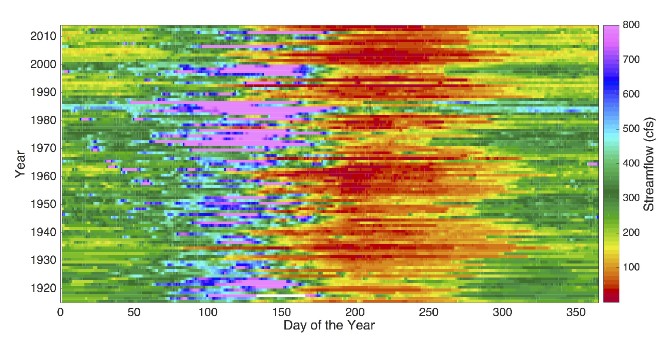 |
||
Raster Grid depicting river flow over many years. Designed and rendered by Mark Stone, Civil Engineering, University of New Mexico. |
||
French Canadian fur traders gave me my name in the early 1800’s. Historic photographs depict me meandering through broad meadows in the semi-arid lands upstream of Pocatello. But a series of events happened that would change my fate. In 1877, the Portneuf Valley became the site of the first railroad in Idaho. The straight line of the raised track bed cut off segments of my flow, and the town was built around the railroad, not around me. |
||
 |
||
Geese and goslings swim in the levee segment of the river. |
||
Throughout Pocatello’s history I have periodically flooded. As early as 1938 the Works Progress Administration (WPA) put in riprap - piles of rocks on my shore - to lessen the damage I might do to agricultural fields when I overflow. In 1962 and 1963, I created havoc in the valley again, so in 1967 the Army Corps of Engineers built a concrete channel to “keep me in my place”. Upstream and downstream of the channel, my body is confined by a series of levees. Trees are removed and even small critters such as marmots, who love to sun on my banks, are relocated because the holes they dig might inadvertently breach the levee system. |
||
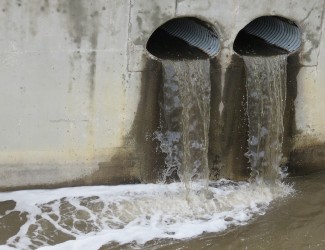 |
 |
|||
Storm-water outflow. |
Marmot sunning on rock rip-rap in the levee. |
|||
Due to many factors, they say I have a “complex biogeochemistry”. Stormwater runoff dumps directly into me through a series of large pipes, and droppings from resident pigeons living under bridges, dog waste, and livestock manure upstream add to the build up of E.coli bacteria in my guts. Additionally, discharge from the municipal wastewater treatment facility, fertilizers from agricultural fields, and runoff from the nearby Simplot phosphorous processing plant create increased phosphorous loads leading to low dissolved oxygen (D.O.) levels. This can cause higher temperatures and algae growth, which reduces insect and fish populations. |
||
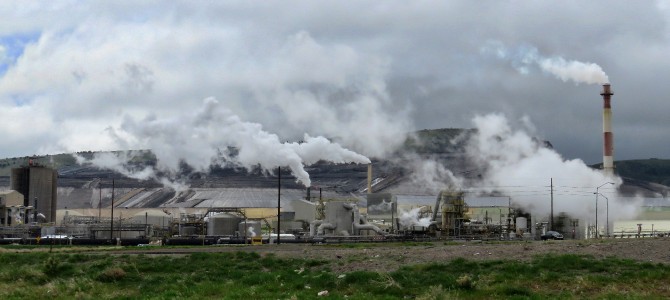 |
||
Simplot phosphorous processing plant with mountainous slag heap. |
||
As with most of my relatives around the world, people think that they can just dump unwanted trash directly into our bodies, with no thought of the consequences. They think our flow will simply take it away, out of sight and out of mind, but there is no “away” anymore. All this trash ends up someplace. Certain people cause the mess and then others must come along and help with cleanup. The effort expended on these cleanups would not be necessary if each person took it upon her or him self to be careful about how they dispose of trash. There is no reason at all for shopping carts, plastic water bottles, food wrappers, and mattresses to be dumped into us, anywhere in the world! A little good housekeeping goes a long way to create a better environment. |
||
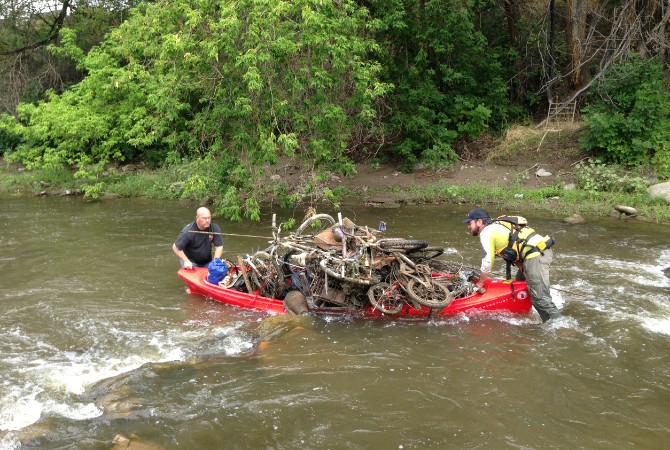 |
||
River trash being hauled out of the Portneuf by canoe. Photo by Hannah Sanger, Science and Environment Division Manager, City of Pocatello |
||
However, there are plenty of thoughtful humans along my banks who work tirelessly to envision a better future for me. Numerous restoration projects are happening in the Pocatello reach, thanks to local governmental, environmental, housing, health, economic development, and transportation organizations; residents and businesses; nearby schools, and the Idaho State University. |
||
 |
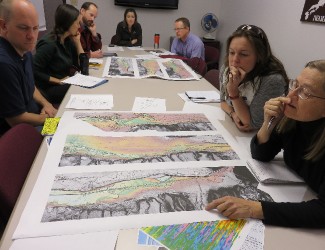 |
|||
A display of river trash at the Idaho Museum of Natural History. |
Watershed meeting. |
|||
Community members are asking questions about what is possible for this disfiguring concrete channel: Can it be removed? Are there sections that could be replaced by gently sloping grassy areas? If some of the channel must remain, what measures would aid in restoring the aesthetic pleasure of visiting me? How can the amount of pollution be reduced? Are there ways to restore me to even a semblance of how I appear upstream, where I meander freely through meadows of the high desert? I hope the answers to these questions will soon turn into action on my behalf. |
||
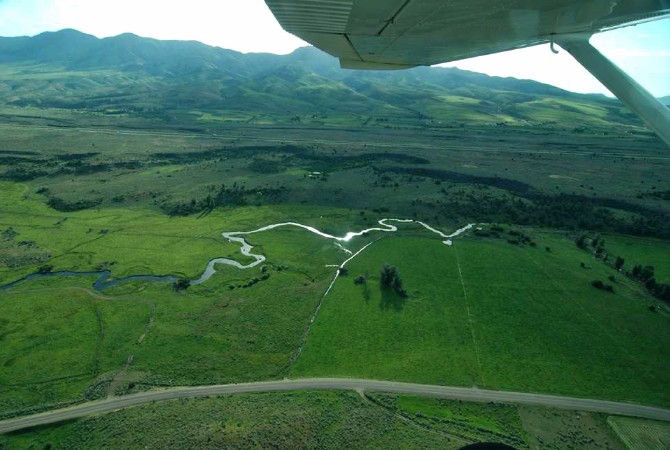 |
||
Natural meanders in Portneuf River upstream of Pocatello. Aerial photo by John Sigler, 2006 |
||
next page: Bagmati River >
< previous page: Amstel River




































